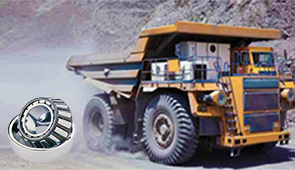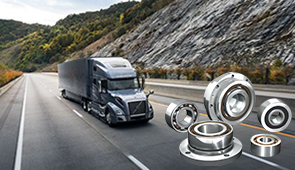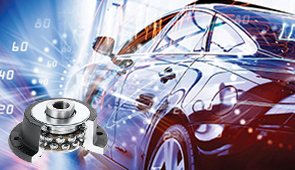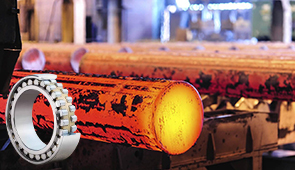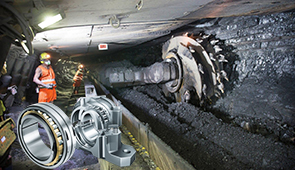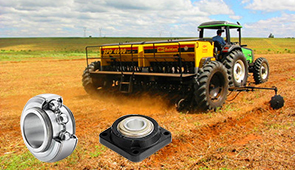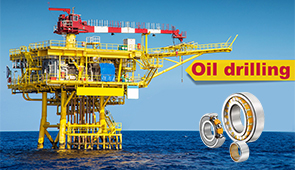Mastering Oil Seals: Essential Guide for Industrial Applications
Oil seals, also referred to as rotary shaft seals or lip seals are fundamental components used to safeguard machinery by preventing the leakage of lubricants and the ingress of contaminants. These versatile sealing mechanisms play a critical role in maintaining operational efficiency, extending the lifecycle of industrial equipment, and ensuring reliability in even the most demanding environments. This guide is designed to provide an in-depth, technical exploration of oil seals, covering their design, materials, applications, and maintenance strategies. Whether you are an engineer, technician, or industrial professional, this comprehensive resource aims to equip you with the knowledge required to optimize the use of oil seals in various industrial contexts.
What is an oil seal and how does it work?
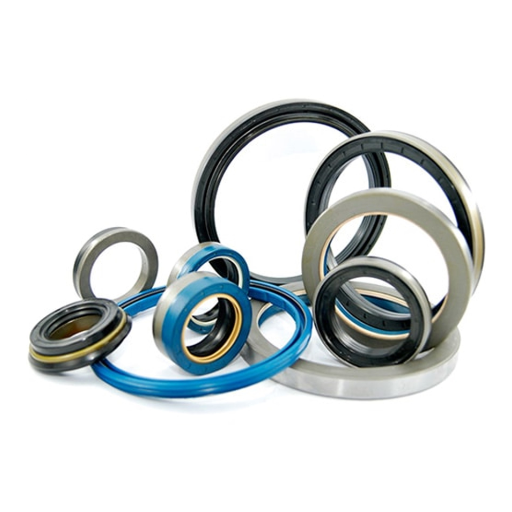
Understanding the basics of oil seals
Oil seals, or rotary shaft seals, are key components that seal the gaps of stationary and movable parts of machinery to prevent lubricant spillage while at the same time preventing the entry of dirt, moisture, and dust. Sealing is achieved by the insertion of a flexible lip that is made from nitrile rubber (NBR), fluoroelastomers (FKM), or silicone and taking into consideration the specific operational requirements. The lip or tip is positioned on the housing and rotates as the shaft spins.
- Shaft Diameter (d): Refers to the diameter of the rotating shaft which varies between 6 mm and 1000 mm based on the application’s needs.
- Housing Bore Diameter (D): The outer diameter of the seal which is fitted snugly within the bore, is generally a little larger than the bore diameter for shaft alignment.
- Lip Material Hardness: This indicates the shutter’s flexibility and durability, determined in Shore A (70-90 as a standard).
- Temperature Range: differs with the grade of material, the ranges are as follows, -40°C to +120°C with NBR and -25°C to +200°C with FKM.
- Surface Finish of Shaft: A shutter roughness index value (Ra) of 0.2 to 0.8 μm is required for effective lip sealing against wear.
- Speed Rating: The periphery shaft speed defines the speed rating, which, for most standard designs, is up to 30 m/s.
- Pressure Tolerance: For commonplace oil seals, the generalized tolerance is around 0.3 MH, although variants capable of withstanding high levels do exist.
It can be understood that oil seals are precisely adjusted to retain optimal performance, reliable functionality, and longevity in different industrial applications.
Components of an oil seal: seal lip, metal case, and spring
- Seal Lip: The most significant component of the oil seal is the lip seal which acts as the primary oil barrier. The seal lip is responsible for withstanding a defined barrier against dirt ingress while keeping the lubricants inside the system. The lip seal’s material is chosen based on the operational environment which varies in interference of wear, temperature, and chemicals. A range of materials can be used including Nitrile Rubber (NBR) for 100°C applications, Fluoroelastomer (FKM) for 200°C, and Silicone for low-temperature applications down to -50°C.
- Metal Case: The oil seal metal case provides the primary structure of the oil seal and, therefore, a skeleton to the seal. It offers structural support and ensures that the seal is properly located in the housing bore. It is often made from carbon steel, stainless steel, or some other coated material to provide stable dimensions and good strength and stiffness for multi-directional forces.
- Spring: The spring, usually a garter spring, provides the lip seal with additional radial force against the shaft. Radial pressure enhances the sealing effectiveness and during the shaft’s rotation, covers up to a little wear on the seals and shaft. Springs are usually made of stainless steel because they do not rust and remain taut under constant operational stresses.
The combination of these three parts provides the best quality seal satisfaction even under harsh working conditions.
What are the different types of oil seals available?
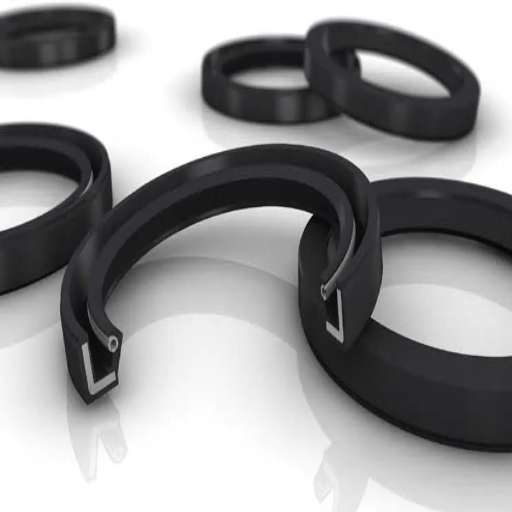
Radial vs. axial oil seals
Choosing between oil seals like radial oil seals and axial oil seals can be tricky because each one serves a distinct purpose. Each one’s application has different needs as well:
Radial Oil Seals
The most common radial oil seals are shaft seals which are mainly designed to immobilize oil on both ends of a rotating shaft and therefore prevent leakage through the radians. These seals are typically used in engines and gearboxes as these environments require dynamic motion. Some of the key components included are:
- Shaft Diameter (d): Measurement of the rotating shaft on which the seal interfaces.
- Outer Diameter (D): The dimension of the seal that goes into the housing bore.
- Speed Limit: The rotation range of the seal which is measured in RPM. Normally, the limit suggested is determined by the lubrication and sealing materials used.
- Operating Temperature Range: Temperature range that needs to be maintained to restrict seal materials durability.
- Pressure Capacity: Generally designed for low-pressure environments; specially designed versions can handle higher pressures as well.
Axial Oil Seals
Axial seals or face seals are meant to be used in any type of system that seals two parts that move together in an axial direction. This can be for a hydraulic and pneumatic cylinder. They are suitable for static and limited dynamic applications. Important technical features are:
- Surface Finish: How polished the surfaces are, trying to seal two improperly finished areas will break the seal.
- Axial Load: Amount of pressure against it while in operation.
- Hardness (Shore A): The seal material’s hardness, which is modified to meet the wear resistance and flexibility needs, falls within a specific range.
- Temperature and Pressure Tolerance: The operational conditions encapsulated by these seals greatly differ based on their material components.
Considering the outlined conditions, it is possible to select the most suitable oil seal for the set working conditions.
Metric and imperial oil seal sizes
In the context of oil seal dimensions, both metric and imperial systems are taken into account to make sure that the particular application is met. Specifications in metric sizes are often given in millimeters (mm) and follow a standard sequence of inner diameter (ID) x outer diameter (OD) x width. For example, a metric seal might be listed as 35×47×7 mm.
- Inner Diameter (ID): The seal’s opening dimension must correlate with the shaft diameter for it to fit well.
- Outer Diameter (OD): Ensures that the seal is appropriately seated in the housing bore.
- Width: This defines the axial space available, precise measurements must be observed to stabilize the position.
Confirming these dimensions against operational specifications is a practical approach for justifying the correct oil seal size against particular applications.
How to choose the right oil seal for your application?

Considering shaft size and operating conditions
Selecting the right oil seal for the specific application, I take into account the shaft size together with the operating conditions to achieve the best results. For shaft size, seal dimensions have a direct impact on the seal’s ability to contain leakage, so I ensure that the measurements of the shaft diameter (SD) are as precise as possible. I take into consideration the finishing and the hardness of the shaft as well. The smoother surface aids in reducing wear on the seal, while having a hardness rating of at least 45 HRC enhancing durability in a friction setting.
- Temperature Range: An oil seal is a product whose material has to endure the surrounding and operational temperatures of the application. For example, nitrile rubber (NBR) works well in temperatures ranging from -40°F to 250°F while fluorocarbon (FKM) has an upper-temperature limit of 400°F.
- Rotational Speed: I verify the seal’s ability to operate at the maximum shaft peripheral speed, generally expressed in surface feet per minute (SFPM), and make sure it serves the operational purpose.
- Pressure: In hydraulic applications where high pressures abound, I use seven psi-rated seals as a minimum to ensure compatibility.
- Media Compatibility: The material, depending on the application, must be non-reactive to fluids such as oil, grease, or fuel that need to be sealed off.
After reconciling these factors with operational requirements, I can choose an oil seal that increases equipment reliability while reducing maintenance troubles.
Compatibility with lubricants and chemicals
To evaluate lubricant and chemical compatibility, I look at the outlines of the substances that are in contact with the oil seal. I check seal material against different classes of lubricants:- mineral oils, synthetic fluids, and greases. For example:
- Nitrile Rubber(NBR): -40 to 250 degrees Fahrenheit, is perfect for all petroleum oil and fuel applications.
- Fluoroelastomer (FKM/Viton): Works well from -15 to +400 Fahrenheit. Has outstanding chemical resistance, especially to synthetic lubricants and other aggressive fluids.
- Silicone rubber: Fuel-derived chemicals do not withstand extreme temperature changes (-75 to +450 Fahrenheit).
I then link the temperature, pressure, and fluid types that the application will be exposed to to assess the seal material’s long-term performance and chemical resistance under operational conditions. It enables the oil seal to remain unquestionable while upholding the equipment’s functionality and lifespan.
What are common oil seal installation and maintenance tips?
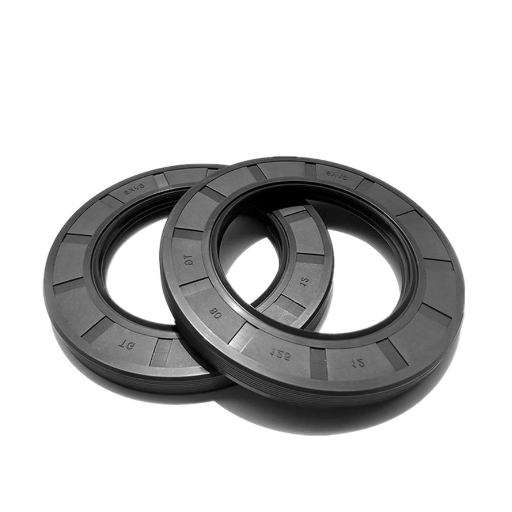
Proper installation techniques to avoid damage
In other to achieve proper performance and service life of oil seals, an accurate installation must be done with care. First, carefully check the shaft and the housing for burrs, scratches, or any other problems which will damage the seal. The surface finish is critical and aggregate roughness average of 10 to 20 microinches Ra will be ideal for minimal wear and a good seal.
Make sure to topically lubricate the oil seal correctly before installation so that it is in the same system lubricant for reduced friction during the installation process. Always employ an appropriate seal driver for pressing the seal. Heed to the seal placement to avoid distortion of the metal/rubber components. The seal must be fitted perpendicular to the shaft axis to avoid seal micro-slips which result in wear or leakage. To ensure that the design does have reinforced seals for higher pressure applications to take the attendant stress of elevated levels. Furthermore, do not over-compress or misalign the seal otherwise operational efficiency and the chemical resistance of the seal can become undermined.
The level of cleanliness during the insertion process must be very high. Contaminants such as dirt or debris can change the formation of the seal that becomes an issue affecting the effectiveness. Using these guidelines and others provided by the manufacturer will enhance the efficiency of the oil seal while avoiding damage to the equipment.
Lubrication requirements for oil seals
The performance and durability of oil seals greatly depend on their proper lubrication. The seal’s primary purpose is to determine the friction between the seal and the rotating shaft so that there is little to no heat buildup. Lubricating oils are advised to be suitable to the operational range temperature and the chemical properties of the seal material. Hydrocarbon-based lubricants are appropriate for general-purpose operations, but silicone-based oil is more suitable for high-temperature operations.
In any case, the requirement of the application needs to be fulfilled about the lubricant’s viscosity. For normal purposes, a 32 – 68 cSt viscosity at 40 degrees Celsius is considered optimal. Depending on the speed and load conditions, it may need to be altered. Moreover, there has to be adequate lubrication film thickness to refrain from direct contact between the sealing lip and the shaft to prolong system functionality. A sufficient film does lower the risk of overheating as well as the chance of unplanned premature failure.
To apply lubricant most effectively, the shaft and sealing lip have to be completely coated and uniformed before installation. The removable lubricant has to be at the prescribed level and should not contain any foreign particles during operations to prevent system damage. Routine maintenance is necessary to preserve the system integrity as well as prolong the seal functionality.
How do oil seals compare to other sealing solutions?

Oil seals vs. O-rings: Pros and cons
In discussing oil seals versus O-rings, the pros and cons of each will depend on how the components are used and their specific technical details. Oil seals are made specifically for maintaining lubrication and sealing ultrapure fluids in systems with rotating or oscillating parts. Their ability to take on a range of shaft speed and pressure, as well as their compatibility with many different viscosities (32 – 68 cSt at 40°C), makes them ideal for dynamic systems. Furthermore, oil seals reduce friction and overheating in addition to extending the life of the system parts by accurately maintaining a lubrication film thickness.
O-rings, on the other hand, are more applicable for static and dynamic sealing due to their low cost but are usually only usable in slow-moving parts as they are less optimal in high-pressure systems. They are easy and simple to use and service; however, unlike oil seals, they are not prepped for high-speed shaft rotation and lubrication retention. O-rings are usually limited by tighter tolerances to temperature ranges and are not as proficient in continuous lubrication control applications.
When choosing between the two, I would look at operating pressure, lubrication requirements, contamination potential, as well as shaft speed. Oil seals are more beneficial in high-precision dynamic systems where lubrication and contamination are critical, while O-rings are suitable for less complex sealing mechanisms that do not undergo high dynamic stress.
Mechanical seals vs. oil seals in industrial applications
In particular dynamic systems with multi-faceted sealing requirements, mechanical seals work as the most effective sealing option. Moreover, they are ideal for high-pressure applications that go above 300 psi, as well as systems that function at advanced shaft speeds of more than 10,000 RPM, depending on the design. Moreover, they are good at managing temperature fluctuations, as with correct lubrication and material selection they can easily function within a -20°F to 400°F range. Above all, the minimization of leakage is the highlight of their design, alongside the effective function in situations when fluid contamination is too stringent.
On the other hand, oil seals are more appropriate for systems with moderate operating conditions. Typically, they perform optimally in pressure ranges of up to 60 psi and speeds not exceeding 5000 RPM. Temperature tolerances for oil seals depend on their material composition, generally ranging between -40°F and 300°F. Their main aim is the retention of lubrication within a system while blocking out any contaminants in other simple applications, whether dynamic or static. For less demanding systems, oil seals serve as a trustworthy, uncomplicated, and cost-effective method that does not require the strict monitoring or heightened expense of mechanical seals.
Given these differences, I would select mechanical seals for systems that are high precision, high performance, robust sealing functionality, high-speed rotation, and contamination control is a need. In the same vein, I recommend the oil seals be used in moderately demanding industrial machines where cost-effectiveness and basic lubrication control are required.
Frequently Asked Questions (FAQs)
Q: What are oil seals and what are they primarily used for?
A: Oil seals, also called rotary shaft seals, are primarily used to prevent oil or grease leakage from machinery and to keep contaminants out. They are used to seal the gap between stationary and moving parts in various industrial applications, ensuring smooth operation and extended equipment life.
Q: What are the differences between single-lip and double-lip oil seals?
A: Single lip oil seals have one sealing edge and are commonly used for general-purpose applications. Double lip oil seals have two sealing edges, providing enhanced protection against contaminants and better retention of lubricants. Double lip seals are often used in more demanding environments where additional sealing performance is required.
Q: How can I shop by brand for oil seals?
A: To shop by brand for oil seals, you can visit specialized industrial supply websites or local distributors. Many suppliers offer filters or categories that allow you to browse seals from specific manufacturers.
Q: What is the function of the steel spring in an oil seal?
A: The steel spring in an oil seal’s design provides constant pressure on the sealing lip, ensuring it maintains contact with the shaft surface. This feature helps the seal adapt to minor shaft irregularities and compensates for wear over time, maintaining an effective seal against oil leaks and contaminant ingress.
Q: How do I determine the correct size oil seal for my application?
A: To determine the correct size oil seal, you need to measure three key dimensions: the shaft diameter, the outside diameter of the housing bore, and the width of the seal. Use a size chart or consult a size oil seal reference guide for both metric and inch sizes. It’s crucial to get an exact fit, as an improperly sized seal can lead to leaks or premature failure.
Q: What are grease seals, and how do they differ from oil seals?
A: Grease seals, like oil seals, are used to prevent leakage and keep contaminants out. However, they are specifically designed for applications using grease as a lubricant rather than oil. Grease seals often have a different lip design to accommodate the higher viscosity of grease. In some cases, the terms “oil seal” and “grease seal” are used interchangeably, especially for seals that can handle both oil and grease.
Q: What are some signs that an oil seal needs replacement?
A: Signs that an oil seal needs replacement include visible oil leaks around the sealed area, contamination of the lubricant, increased noise or vibration from the sealed component, and decreased performance of the machinery. Regular inspection of seals for signs of wear, hardening, or damage can help prevent unexpected failures and maintain optimal equipment operation.
UCTH213-40J-300 with Setscrew(inch)
CNSORDERNO: Normal-duty(2)
TOGN: UCTH213-40J-300
SDI: B-R1/8
SD: 2 1/2
UCTH212-39J-300 with Setscrew(inch)
CNSORDERNO: Normal-duty(2)
TOGN: UCTH212-39J-300
SDI: B-R1/8
SD: 2 7/16
UCTH212-38J-300 with Setscrew(inch)
CNSORDERNO: Normal-duty(2)
TOGN: UCTH212-38J-300
SDI: B-R1/8
SD: 2 3/8
UCTH212-36J-300 with Setscrew(inch)
CNSORDERNO: Normal-duty(2)
TOGN: UCTH212-36J-300
SDI: B-R1/8
SD: 2 1/4
UCTH211-35J-300 with Setscrew(inch)
CNSORDERNO: Normal-duty(2)
TOGN: UCTH211-35J-300
SDI: B-R1/8
SD: 2 3/16
UCTH211-34J-300 with Setscrew(inch)
CNSORDERNO: Normal-duty(2)
TOGN: UCTH211-34J-300
SDI: B-R1/8
SD: 2 1/8









